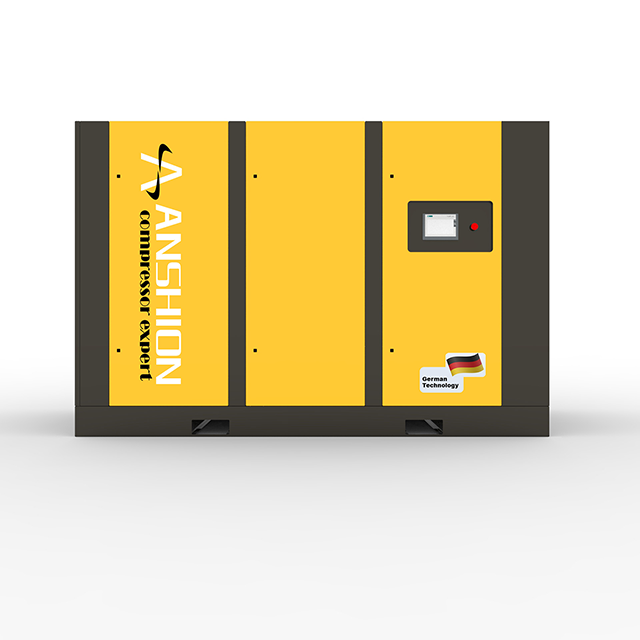2024/10/29 11:29:04
Resources
How to choose water-cooled or air-cooled air compressor
The choice of cooling method for air
compressors is a key link in their design and application, and is mainly
divided into two categories: water cooling and air cooling. Choosing a suitable
cooling method is not only related to the operating efficiency, energy
consumption and maintenance cost of the air compressor, but also directly
affects the adaptability and service life of its working environment. This
article will discuss in detail the characteristics, applicable scenarios and
selection considerations of water-cooled and air-cooled air compressors to help
users make the best choice according to actual needs.
1. Water-cooled air compressor
The water-cooled air compressor cools the
heat inside the compressor through a circulating water system. The circulating
water is obtained from the cooling tower or water source, and the heat is taken
away through the heat exchange between the cooler and the compressor, thereby
keeping the operating temperature of the compressor within a safe range.
Features:
Efficient cooling: Water has a large heat
capacity and can absorb and transfer heat more effectively, ensuring that the
compressor operates stably under high load or high temperature environments.
Wide range of applications: Suitable for
industrial applications with high power and high gas output, especially in high
temperature or high humidity environments, the cooling effect of air-cooled air
compressors may be limited.
Maintenance requirements: The water-cooled
system requires regular inspection and maintenance of the quality of the
cooling water to prevent scaling, corrosion and biological growth, and the
maintenance cost is relatively high.
2. Air-cooled air compressor
Air-cooled air compressors dissipate heat
through forced air flow or natural convection. The heat inside the compressor
is exchanged with the surrounding air through heat sinks or fans to achieve
cooling.
Features:
Simple structure: No additional water
circulation system is required, reducing the complexity and initial investment
of the equipment.
Easy to install: Low requirements for the
installation environment, suitable for small or medium-sized applications, and
mobile air compressors.
Strong environmental adaptability: In a dry
and clean environment, the cooling effect of air-cooled air compressors is
good, but in a high temperature or high dust environment, its cooling
efficiency and maintenance requirements will increase.
3. Selection considerations
When choosing a water-cooled or air-cooled
air compressor, the following factors should be considered comprehensively:
Working environment: ambient temperature,
humidity, dust volume and available space. High temperature and high humidity
environments are suitable for water cooling, while clean and space-constrained
environments are suitable for air cooling.
Application requirements: Consider the
output, pressure and continuous operation time of compressed air. High-power,
high-gas-output industrial applications tend to be water-cooled, while small or
intermittent applications are suitable for air cooling.
Cost and maintenance: including initial
investment, operating costs and maintenance requirements. The initial
investment of water-cooled systems is higher, and the maintenance costs are
relatively increased, while the opposite is true for air-cooled systems.
Sustainability: Consider energy efficiency,
water consumption and environmental impact. In areas where water resources are
scarce or environmental protection requirements are high, air cooling may be a
better choice.
The choice of water-cooled or air-cooled
air compressors should be based on specific application scenarios,
environmental conditions and cost considerations. For industrial applications
that require continuous high-load operation, high working environment
temperature or excessive humidity, water-cooled air compressors are a better
choice; for small or intermittent applications, especially those that are
sensitive to installation space and initial investment, air-cooled air
compressors are more advantageous. In the actual selection process, it is
recommended to consult professional suppliers or engineers, make comprehensive
assessments based on specific needs and conditions, and make reasonable
decisions. With the advancement of technology and the improvement of
environmental protection requirements, the cooling methods of air compressors
are also constantly innovating, and more efficient and environmentally friendly
cooling solutions will bring more choices to users.
